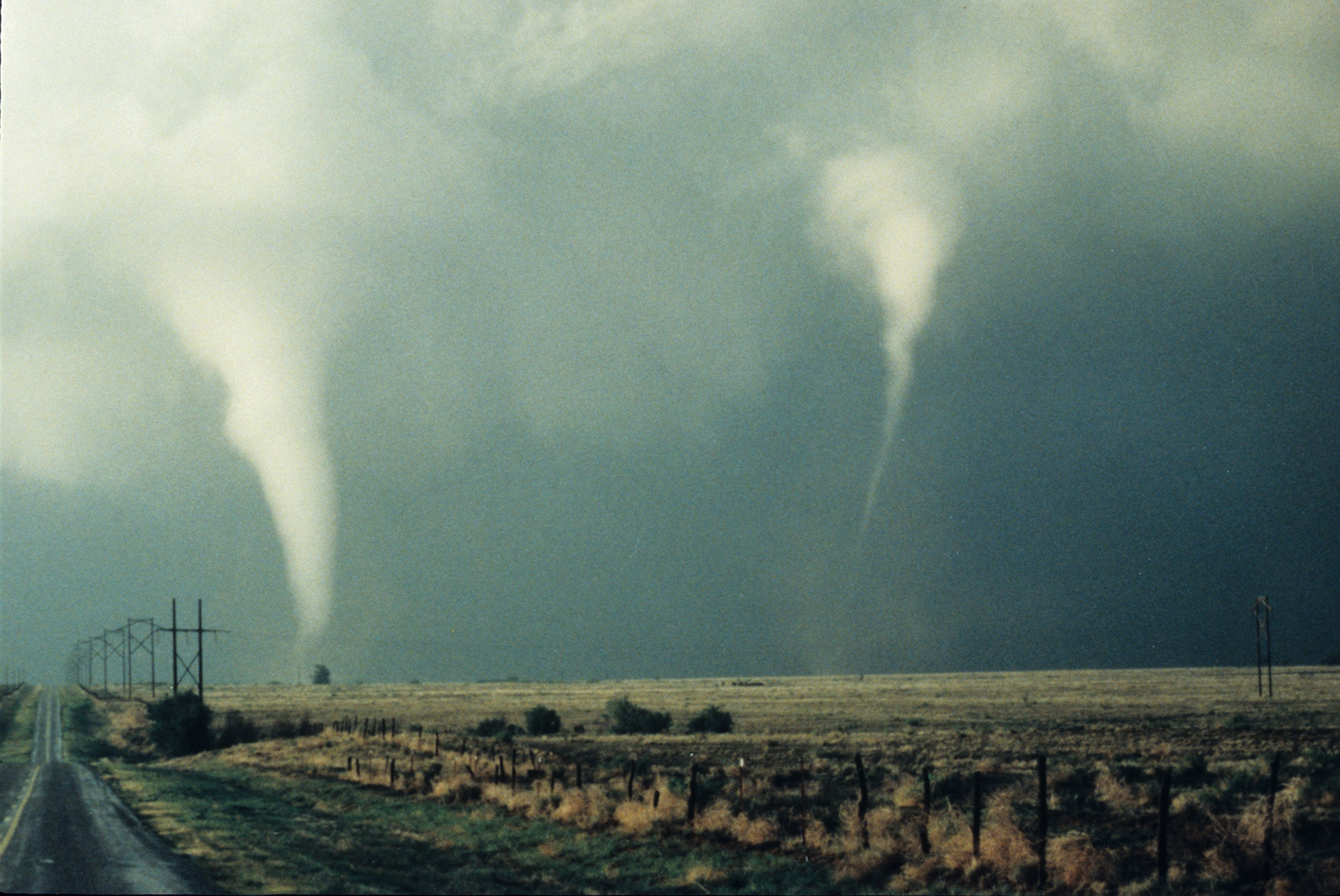By Catherine A. Cardno, Ph.D.
The new edition of ASCE’s Minimum Design Loads and Associated Criteria for Buildings and Other Structures (ASCE 7-22) includes for the first time a chapter dedicated to tornado loads. The wind characteristics and interactions with structures in tornadic storms differ markedly from traditional winds, and the ASCE 7-22 committee determined that it was time to include specifications for such storms in the design criteria.
At its most basic definition, a tornado is a violently rotating column of air that touches the ground, usually attached to the base of a thunderstorm, explains Marc Levitan, Ph.D., A.M.ASCE, the lead research engineer at the National Institute of Standards and Technology’s National Windstorm Impact Reduction Program and the chair of the ASCE 7-22 task committee that developed the tornado provisions.
Tornadoes form inside thunderclouds when warm, humid air rises and cool air falls, causing spinning air currents within the cloud. When the spinning currents drop down from the cloud and become vertical, the tornado forms. “Tornadoes are nature’s most violent storms,” Levitan says. They can cause fatalities and devastate neighborhoods in seconds, with winds that can exceed 300 mph. The largest tornadoes can have damage paths wider than 1 mi and up to 50 mi or more in length.

Tornadoes are qualitatively rated as to their destructive potential on the Enhanced Fujita scale, which ranks them from EF0 to EF5 based on estimated wind speed and damage. An EF0 tornado, for example, causes minor damage and has estimated wind speeds of 65-85 mph. An EF1 causes moderate damage with estimated wind speeds of 86-110, while an EF2 causes considerable damage with estimated wind speeds of 111-135 mph. EF3 tornadoes cause severe damage with estimated wind speeds of 136-165 mph, EF4s inflict devastating damage with estimated wind speeds of 166-200 mph, and EF5s cause incredible damage with estimated wind speeds greater than 200 mph.
The ASCE 7-22 tornado chapter covers tornado speeds of approximately EF2 intensity or less, depending on geographic location and other factors.
While the largest tornadoes make global news due to the devastation they cause, most tornadoes are much smaller, Levitan says. For example, he notes that from 1995 to 2016 there were, on average, 1,200 tornadoes a year in the U.S. Of those, 89% were EF0 or EF1, and 97% were rated as EF2 or lower.
And even in stronger storms, far more buildings will be affected by lower wind speeds on the outer edges of the storm than are affected by the most devastating central portion. This was the case in the nearly mile-wide Joplin, Missouri, EF5 tornado in 2011 that killed 158 people: 72% of the area swept by the tornado experienced EF0-EF2 winds, while only 28% experienced EF3-5 winds, Levitan says.
Standards versus codes
The ASCE 7 standard is updated every six years on a set cycle. While standards are crucial first steps to eventual adoption in building codes, they are only starting points.
Ronald Hamburger, P.E., S.E., F.SEI, a senior principal with Simpson Gumpertz & Heger Inc. and the chair of the ASCE 7-22 committee, explains that while the standards developed by ASCE and other professional organizations are good first steps toward updating building codes, they are “not actually binding until adopted by a building code at the city, county, or state level.”
In the United States, most cities, counties, and states adopt their local building codes based on the International Building Code. “(This) is a model code that’s published by the International Code Council as a guideline for communities wishing to adopt building codes. But until locally adopted, it does not become enforceable,” Hamburger says. Enforcement of the codes falls to the same jurisdictions that adopt them.
Areas that use the model IBC code to create their own codes will often adopt amended codes to better fit the needs of their specific areas or regions. “The amendments typically are intended to account for local climatic, geologic, and construction practice conditions,” Hamburger says. “For example, a community in Idaho may decide to adopt the International Building Code, which has tsunami provisions in it, and they’ll say, ‘Well, we’re not on the coast; we don’t need tsunami provisions, so we’ll adopt it without the tsunami provisions.’”
For these reasons, it can take some time between a new standard being published and that standard being adopted into the IBC and ultimately making its way into local, county, or state building codes.
ASCE’s Structural Engineering Institute has recently submitted a proposal to the ICC to adopt ASCE 7-22 into the 2024 IBC. “Typically states and communities take a year or two — sometimes more — to adopt the latest edition of the International Building Code, so probably ASCE 7-22 will not be adopted in most communities as law until 2025 or so,” Hamburger notes.
Why now?
The original version of ASCE 7 was published in 1988, and while tsunami loading was added in the 2016 edition, “adding in an entirely new loading criteria — in this case tornadoes — is a relatively infrequent event,” says Hamburger.
The 2011 Joplin tornado disaster was the motivation for adding the tornado chapter to this edition of ASCE 7. Investigative work into the event by NIST took a few years. Then NIST took “the lead in developing what they thought would be appropriate code-adoptable criteria,” Hamburger says.
As part of this development, NIST also created new tornado hazard maps for the United States, Levitan says.
While some engineers felt it was critical to adopt design criteria for tornadoes to better protect buildings and people, others felt the storms were so rare that the design criteria weren’t necessary. The intent for standards is not to design for any disaster that could occur, Hamburger notes. Instead, “we seek to provide economical design criteria that would create acceptable levels of protection of the built environment, within the desires and the needs of society at large.”
Prior to the completion of ASCE 7-22, there were no generally applicable criteria for design against tornadoes that vulnerable communities could rely on. “But now with the completion of ASCE 7-22, there are a reliable set of criteria available that communities can adopt if they want to,” Hamburger says.
Design criteria limits
Tornado design criteria are unique to tornadoes and not just a subset of wind loads. “The tornado design procedures reference parts of the wind design chapters, but they are two separate loads, (and) they are handled separately in the load combinations,” Levitan says.
“Wind hazards in the tornado are different than wind hazards in the straight-line winds” because vertical updrafts, atmospheric pressure changes, and the rate of change of wind direction are all unique to tornadic storms, Levitan explains.

Tornado loads also combine differently with other environmental loads compared to wind loads, Levitan says. For example, there are no load combinations that include simultaneous effects of tornadoes with snow loads on roofs, as tornadoes are warm-weather phenomena.
The tornado design criteria are also very dependent on the plan size and location of a building. Because the footprint of tornadoes can be small, the larger a building, the greater a chance it has of being struck, especially by the highest wind speeds at the center of a tornado as it moves along its path, according to Levitan. On the flip side, enormous tornadoes can form that are a mile wide and can engulf smaller buildings completely in the high-wind field, Levitan says.
Crucially, the design criteria for tornadoes that are included in ASCE 7-22 do not rise to the level of safe rooms or storm shelters, Levitan is quick to point out.
“We’re not designing for EF4 or 5 tornadoes,” Levitan clarifies. “If you want to design for life safety protection from the most intense tornadoes, put in a storm shelter or a safe room.” Such shelters are covered in ICC 500, the ICC/National Storm Shelter Association Standard for the Design and Construction of Storm Shelters, and Federal Emergency Management Agency P-361, Safe Rooms for Tornadoes and Hurricanes: Guidance for Community and Residential Safe Rooms.
Special provisions were added to the ASCE 7-22 tornado chapter for essential facilities — such as hospitals and emergency response facilities — that need to remain operational in the event of extreme environmental loading. These buildings are required to maintain functionality after a design-level tornado. Even if a fire station, for example, has a storm shelter where firefighters can retreat to during a tornado, the destruction or damage of the fire station itself and the equipment inside would compromise the ability of it to operate post-disaster when it is most needed.
“Although the probability of any one building being hit by a tornado or a high-intensity tornado is very small, tornadoes do cause billions of dollars of damage a year in the United States,” Hamburger says. “And they do cause life loss every year in the United States.”
"While these requirements will not protect every building against any tornado that could strike them, they should, over time as more and more buildings are designed using these provisions, reduce both the economic and life loss that occurs on an annual basis in the U.S.,” he says.



